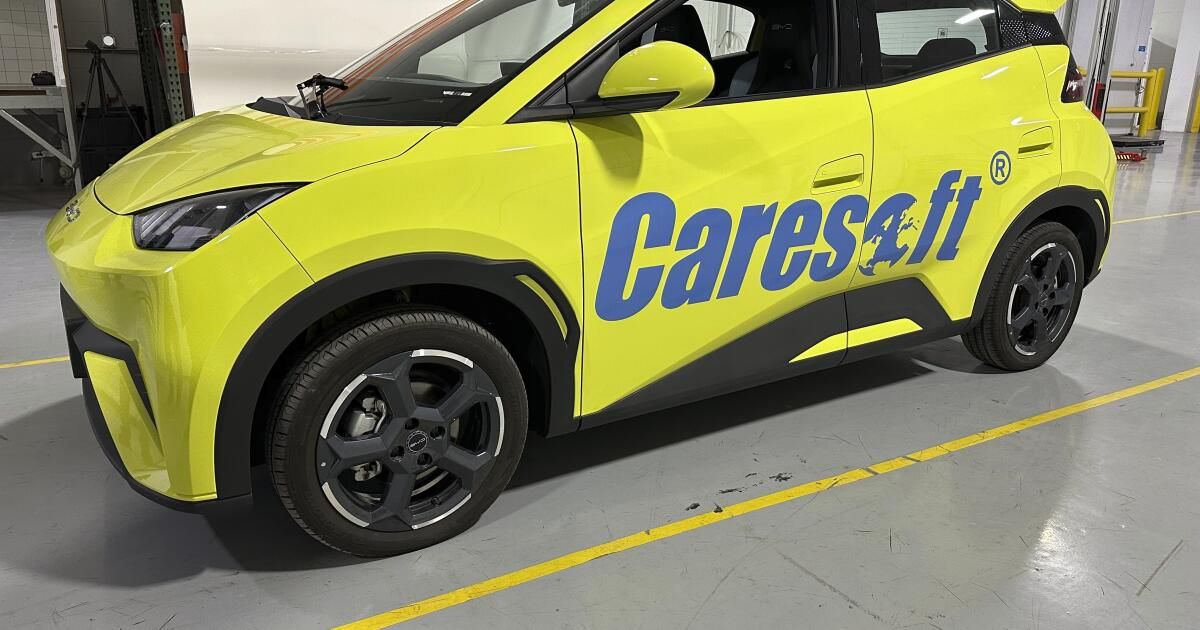For buyers who want to buy an electric car but have been put off by the high price, the news this week that President Biden has raised tariffs on electric vehicles made in China to exclude them from the U.S. market is not good.
It means that Chinese-made electric vehicles won't be sold in the U.S. anytime soon, and American consumers won't have access to affordable models, like BYD's Seagull, which It sells for $12,000 in China. Similar electric vehicles available in the US currently cost three times as much.
Right now, the US car market lacks smaller, cheaper electric vehicles. Automakers in the United States have focused on electrifying larger, more expensive models, including SUVs, pickup trucks and minivans. The average price of an electric vehicle is $55,000, and the high sticker price is one of the reasons electric vehicle sales are slowing; Price-limited buyers are excluded from the market.
Biden's decision to impose 100% tariffs on electric vehicles made in China stifles the possibility of competition at the lower end of the auto market and means the affordability gap will continue. That will slow the transition to zero-emission vehicles at a time when the United States needs to quickly reduce its dependence on fossil fuels.
It is true that international trade policy with the United States' main economic competitor is complex. Biden is playing a long game. His administration, along with Congress, has committed billions of dollars to boost manufacturing of electric vehicles and batteries in the United States so the country is not dependent on foreign imports.
The Biden administration maintains that the tariffs are part of a broader strategy to grow the green economy by protecting the nascent domestic electric vehicle manufacturing industry and its high-paying jobs from competition from cheaper and sometimes better Chinese products. But it is frustrating that the United States finds itself in this position. China is winning the electric vehicle race because the government invested money in developing zero-emission technology, knowing that electric vehicles are the future.
As China looked ahead, American automakers spent much of the last decade trying to delay electric vehicle production mandates and investing in larger, more expensive, gas-guzzling SUVs and pickup trucks. When President Trump was elected, automakers persuaded him to roll back Obama-era vehicle pollution rules that would have required companies to increase fuel economy and build more hybrid and electric vehicles.
The U.S. government and industry wasted years dithering over tailpipe emissions standards, while China looked at how to get rid of tailpipes altogether.
Now, there is at least a push in the United States – albeit slower than necessary – toward a zero-emissions future. Still, it's impossible to separate the tariff decision from election-year politics. Biden and Trump compete for the title of “toughest on China.” While Biden announced 100% tariffs on electric vehicles made in China, Trump said he would impose them. 200% tariffs in Chinese vehicles manufactured in Mexico.
Earlier this year, the Biden administration finalized a watered-down requirement for electric vehicles, bowing to pressure in swing states, such as Michigan and Wisconsin, from automakers and the United Auto Workers union, which pushed to slow the transition to electric vehicles due to concerns about job losses.
Biden has yet to make the case that protectionism will help American consumers and the fight to curb global warming, and his administration should support more policies and financial incentives to balance the increased cost to Americans. Tariffs may be a temporary measure to help the United States catch up, but ultimately the nation needs to be a leader in the zero-emissions future.












